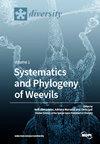Bats of the Tunisian Desert: Preliminary Data Using Acoustic Identification and First Record of Taphozous nudiventris in the Country
IF 2.1
3区 生物学
Q2 BIODIVERSITY CONSERVATION
引用次数: 0
Abstract
Increasing aridity usually results in decreasing bat abundance and species richness, and the Saharan desert is an example of such impoverishment. Moreover, the harsh climatic and field conditions in this area restrict the feasibility of surveys. Therefore, the bat fauna of the Tunisian Sahara was unstudied until an expedition was conducted in May 2021. A total of seven species were recorded using passive bat detectors set mainly at water bodies, which concentrate bat activity. Echolocation calls of these species did not depart from published records for the Mediterranean area. Our data failed to identify the two ecomorphotypes of Pipistrellus kuhlii but confirmed the adaptability of this species to local conditions. For the first time in Tunisia, we recorded echolocation calls of Taphozous nudiventris, a species that has been rarely reported in North Africa. The highest species richness was identified at the largest wetlands of Oued Daghsen (Oued Dkouk Nature Reserve) and at Bordj el Khadra (only six and four species, respectively). Most Mediterranean species were recorded in the northern locality, while desert species were more active in the most southern one. The importance of water bodies for bats was confirmed once more. No sign of competition among species was detected, as the Mediterranean and desert-dwelling bat species were active at the same time. Additional surveys should be planned in order to enlarge the list of seven species recorded in only one week.突尼斯沙漠的蝙蝠:利用声学识别的初步数据和在该国首次记录的裸齿兽
日益严重的干旱通常会导致蝙蝠数量和物种丰富度的减少,撒哈拉沙漠就是这种贫瘠的一个例子。此外,该地区恶劣的气候和野外条件限制了调查的可行性。因此,直到2021年5月进行了一次考察,人们才对突尼斯撒哈拉沙漠的蝙蝠动物群进行了研究。利用主要设置在集中蝙蝠活动的水体中的被动蝙蝠探测器,共记录了7种蝙蝠。这些物种的回声定位呼叫并没有偏离地中海地区的出版记录。我们的数据未能确定库氏Pipistrellus kuhlii的两种生态形态,但证实了该物种对当地条件的适应性。这是我们第一次在突尼斯记录到裸翅象(Taphozous nudiventris)的回声定位呼叫,这种物种在北非很少被报道。物种丰富度最高的湿地是Oued Daghsen (Oued Dkouk自然保护区)和Bordj el Khadra(分别只有6种和4种)。大多数地中海物种记录在北部地区,而沙漠物种在最南部地区更为活跃。水体对蝙蝠的重要性再次得到证实。没有发现物种之间竞争的迹象,因为地中海和沙漠栖息的蝙蝠物种同时活跃。应计划进一步的调查,以扩大在一周内记录的七种物种的名单。
本文章由计算机程序翻译,如有差异,请以英文原文为准。
求助全文
约1分钟内获得全文
求助全文
来源期刊

Diversity-Basel
Environmental Science-Ecological Modeling
CiteScore
3.40
自引率
12.50%
发文量
925
审稿时长
11 weeks
期刊介绍:
Diversity (ISSN 1424-2818) is an international and interdisciplinary journal of science concerning diversity concept and application, diversity assessment and diversity preservation. It is focused on organismic and molecular diversity. It publishes reviews, regular research papers and short notes in the regular issues. Related news and announcements are also published. Our aim is to encourage scientists to publish their experimental and theoretical results in as much detail as possible. Therefore, there is no restriction on the length of the papers. Full experimental details must be provided so that the results can be reproduced.
 求助内容:
求助内容: 应助结果提醒方式:
应助结果提醒方式:


